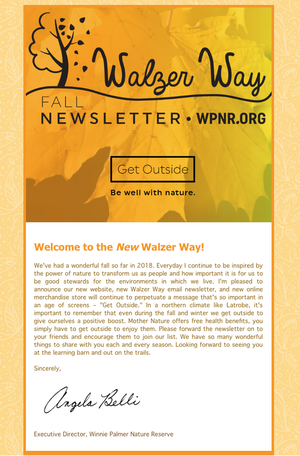|
Hey Neighbors! I hope you all are happily anticipating the warmth and abundance of Thanksgiving. It's so hard to believe it's already here! Tomorrow marks the official start of the holiday season and If you're anything like me, you've already started to think about what's next on the agenda. Before we know it, the days will be jam-packed with festivities and we'll all be up to our mistletoe in treat baking, merrymaking, and gift giving. It's hard not to be smitten with the lights and music, and many projects to dive into that make the season bright; however, I've been giving some thought to one of the many excessive parts of the holidays, and that is none other than gift wrap. Oh, it's so hard to resist when we are tempted by all of the shiny paper and the latest designs that retailers flash at us. The bows, and ribbons in perfectly curated collections - they're just so festive and pretty! Who doesn't want a pile of fancy boxes all tied up meticulously under their tree? At the risk of sounding Grinch-like, let's all take a collective deep breath and think about what happens after the holidays. All of the gifts have been opened and there are literally piles of paper and boxes everywhere. I personally feel very sad when I see all of my hard work, time, and money lying around on the floor shredded to bits. What's worse is that I know I'll save some of it...but only some. What about the rest? Say it together folks: the landfill. That's right, bags upon bags of trash will go right into the landfill. We all know it, and I'm convinced we all want to do something about it, but how? And what? I have some ideas. Here are 10 ways you can create less waste this season. And they're easy.
I do hope you'll be inspired to try some of these ideas and in turn inspire others to create less waste this holiday season. We're all a part of this neighborhood and each of us can do a little something no matter how small to keep it healthy and safe for the next generation. Have a lovely holiday. AuthorJennifer Eppolito, Education Horticulturist
2 Comments
Hey neighbors!
 Spearmint in the wild. (click to enlarge) Spearmint in the wild. (click to enlarge) Spearmint and Peppermint There are many kinds of mint growing in the gardens but the true peppermint and spearmints have the best flavor. Harvested in the early morning after the dew has dried, these mints are gently rinsed, bundled, and hung to dry before being de-stemmed and stored. They are so prolific, I can harvest copious amount all summer long. Mints are wonderful pollinator plants so I'm always sure to leave lots of flowers for our friends. Mints can be used in teas, fresh or dried in fruit salads, or to make herbal waters. My personal favorite is cubed papaya with a squeeze of lime, chopped mint, and a drizzle of raw honey from our apiary. Lemon Balm Melissa officinalis is an amazing herb for soothing stressed nerves, anxiety, and digestive issues. With a light, sweet, lemony flavor, it can be paired with many other herbs for teas, herbal waters, and other infused drinks. It's name is derived from the Greek word for honey, which is no surprise given how many pollinators this herb attracts. It's a very easy to grow perennial, and like the other mints, it shares a family with, can be aggressive in the garden. Tulsi or Holy Basil With its tutti-frutti scent and sweet flavor, this herb is like no other. Grown in almost every household in India for it's reputed protective qualities, Tulsi is my absolute favorite. It's an adaptogenic herb which means that it has the ability to help the body deal with stress on a physical level. It can be consumed as a tea and mixed with other herbs and flowers such as rose petals or lavender. It's an annual which means in our zone you'll have to plant it every year, but it produces lots of seeds. You can either collect the seeds and grow new plants the next season, or you can allow Mother Nature to do the work for you and just wait for it to reseed. Elderberry Elderberry is the great healer. Folklore says that the mother elder tree was placed at the head of the garden to protect all of the other plants and ensure a bountiful harvest. It makes an amazing jelly, the sweetest wine, and a flavorful pie. Clinical studies show that elderberry is effective in treating viral illness which means that regular consumption may protect you during cold and flu season. I like to boil the fresh or dried berries with a slices of ginger and a few cloves, then mix the cooled juice with raw honey for a lovely syrup. Your kids will never complain about taking this medicine! Use caution with elderberries since the leaves, stems, raw seeds, and unripe berries are toxic. Catnip If you're plagued by insomnia, consider growing catnip. Gentle enough for babies, more mint-like than chamomile, catnip has mild sedative qualities that can help ease you into a slumber. Also called catmint, as it's a member of the mint family, and it is indeed the same catnip your feline friends love to indulge in since it exudes feline sex pheromones. In our zone this easy to grow perennial can be harvested repeatedly throughout the season. Try a bit of cooled tea with a touch of honey for toddlers and young children who are restless. Fennel Upset stomach and indigestion got you down? The anise-like flavor of fennel soothes your digestive woes. As a prolific perennial, it only needs to be planted once. It reseeds easily and can be a garden thug if not kept in check with frequent removal of young seedlings. As a bonus, it's the host plant to the gorgeous Eastern Black Swallowtail Butterfly and makes a beautiful ornamental backdrop plant in gardens. Stinging Nettle An allergy sufferers best friend, stinging nettles are one of natures super heroes. High in vitamins and iron, they can be used for everything from medicine to meals. Picked early in the spring, they can be made into a nutritious pesto or mixed with peppermint for a refreshing tea. Be careful when harvesting nettles because, as the name implies, they sting. The leaves and stalks are covered with tiny barbs that contain formic acid, histamine, and other acids which cause a burning, itchy rash...not to worry, it will subside in an hour or so. Like bees used in apitherapy, stinging nettle has been used for arthritis treatment and other joint inflammation issues. You don't have to grow nettles in your garden, as they are found all over wild spaces in our region. Just be sure to harvest from a clean area free from pesticides and herbicides. Use gloves when handling and be sure to dry or expose to heat before consuming. I hope you all are able to enjoy a little of nature's abundance from your own gardens and if you'd like to try out some of our tea blends or learn more about the herbs growing in the gardens at WPNR, please join us for a Colonial Christmas fireside herb talk and tasting on December 6, 2018 from 12:00-2:00pm. You can find out more about this fun and tasty adult event and register below. Thanks for supporting us and check back next week for more Wilding Wednesday! AuthoRJennifer Eppolito, Education Horticulturist Winter fare can be less than stellar when we have to resort to grocery store produce that's been trucked halfway across the United States to reach our plates. We all know we need to eat healthy, but getting your 5-a-day in Western Pennsylvania's off season can be tough - literally. Especially when it comes to greens. Visit any grocery store and grab at a bunch of kale or lettuce. It's wilted, lackluster, and flavorless. The farmers markets are long over, and the garden has been tucked in for the season. So what to do? Frozen, dried, or far-flung imports? Take your pick, you gotta eat! Here at WPNR we have good news for you. Winter doesn't have to be a bowl of dried peas reconstituted with boxed broth. It can be alive and teeming with brilliant green nutrients from the garden! Even while the garden is sleeping. Even in winter. Pictured above is a view of our Harvest Garden. This bed is indeed resting for winter, but it's packed full of young, tender pea shoots known as Austrian Winter Peas (Pisum arvense). These greens will survive to 10°F even under a blanket of snow and can be harvested all winter long. They not only look tantalizing, they taste like the freshest, sweetest peas you've ever eaten. But that's not the only reason we plant them. Every fall, after the growing season has yielded okra, pumpkins, garlic, and lots of other vegetables, a cover crop is planted to protect the soil. Cold, dry winds erode it, while gardening depletes it of vital nutrients. In order to keep the soil healthy it must be replenished. Austrian Winter Peas are one of many choices of legume cover crops. They're my personal favorite because they not only fix nitrogen in the soil, which is essential for healthy plant development, but this plant gives us something every season without fail . Win-win. We sow them in the fall, they quickly grow tender shoots and then the snow flies. It covers the pea shoots and they remain there all winter, under snow, sleet, and freezing rain, ripe for the picking. Then, as spring gently thaws the ground and the beds begin to warm in the sun, the peas resume growth. They develop beautiful fuschia flowers, and the bees appreciate the sweet early nectar. As they mature, we allow some plants to grow full pods and dry on the vine to be collected for next years seed crop, while others are pulled and layered in the beds as green mulch. We nest tender vegetable plants right inside it which helps to protect them by conserving moisture in the soil and suppressing weeds that compete for nutrients. The plants also break down over the growing season adding healthy biomass to the soil. When the harvest has come to fruition, we start all over again. If you've ever grown a bean plant from a seed (kindergarten science, anyone?) you can grow Austrian Winter Peas. It's insanely easy. In zones 5 and 6, they need to be planted mid-August to early September. The process is pretty simple: start by inoculating (a fancy word for swirl the peas in a cup with some water and rhizobium bacteria powder) the peas, throw them on some loose soil, rake them around a bit, water, keep moist until they germinate, and wait for your food to grow. That's it. If you already have a garden, you can plant them anywhere you have free space. You'll reap the benefits of every cycle of the plant in addition to enjoying the winter food crop. If you don't have a garden you can easily prepare a patch of soil to grow them in. Who knows, maybe it will inspire you to grow other vegetables in the spring! You might be wondering how to enjoy these lovely greens. There are endless ways to prepare them, but I quite like them raw as a salad. Cut into bite sized pieces with kitchen shears, dress with good olive oil, raw honey, a splash of balsamic, garlic, sea salt and pepper, and maybe a pinch of red pepper flakes for a kick. Simple and elegant. You can also do a quick saute' in butter with a sprinkle of sea salt, or even as a substitute for lettuce on a sandwich or wrap. Undoubtedly, you'll find yourself snacking straight from the garden and wondering why you hadn't planted them sooner. You can purchase peas and the inoculant from many online retailers and we are always available to answer any questions you might have. If you'd like to sample our peas, please stop by the barn and ask us, we love to share! Happy gardening and thanks for being a part of our neighborhood. AuthorJennifer Eppolito, Education Horticulturist  Welcome to the New Walzer Way! We've had a wonderful fall so far in 2018. Everyday I continue to be inspired by the power of nature to transform us as people and how important it is for us to be good stewards for the environments in which we live. I'm pleased to announce our new website, new Walzer Way email newsletter, and new online merchandise store will continue to perpetuate a message that's so important in an age of screens – "Get Outside." In a northern climate like Latrobe, it's important to remember that even during the fall and winter we get outside to give ourselves a positive boost. Mother Nature offers free health benefits, you simply have to get outside to enjoy them. Please forward the newsletter on to your friends and encourage them to join our list. We have so many wonderful things to share with you each and every season. Looking forward to seeing you at the learning barn and out on the trails. Sincerely, Executive Director, Winnie Palmer Nature Reserve
|
AboutThe Walzer Way Blog is maintained by WPNR staff with contributions from Saint Vincent College students and staff, volunteers, community members, and more. If you are interested in contributing to The Walzer Way Blog, contact the Learning Barn. Categories
All
Archives
March 2020
|
|||||||||||






 RSS Feed
RSS Feed

